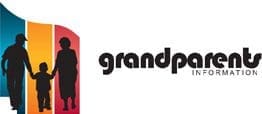About Elder abuse
What is elder abuse?
Elder abuse is anything that might be cause harm or distress to an older person. While the term elder abuse can be used to describe lots of different issues and situations, the World Health Organisation (WHO) defines it as:
Elder abuse is most frequently financial and psychological, but can also be physical, sexual, social or neglect. Abuse is generally carried out by someone close to the older person. Helpline data shows this is most commonly the older person’s adult son or daughter, though it also happens within a wide range of other family and caring relationships. Elder abuse is often hidden and can be difficult for those experiencing it to talk about.

Types of elder abuse
Financial abuse
Financial abuse is theft or the improper use, restriction and/or mismanagement of a person’s money, property or resources. Some examples might be:
Misusing an older person’s bank cards.
Using coercion or threats to obtain money (or financial gain) from an older person.
Misusing a legal document, such as an Enduring Power of Attorney.
Coercing someone to alter their Will.
Selling or transferring property against an older person’s wishes, or failure to respect agreements made in regard to property and living arrangements.
Not repaying loans or contributing to household expenses.
Withholding appropriate care for financial gain.
Emotional and psychological abuse
Emotional and psychological abuse is behaviour that causes mental distress and/or emotional harm. It is behaviour that might cause an older person to feel humiliated, isolated or fearful. Psychological and emotional abuse can deeply affect an older person’s sense of self-esteem, confidence and self-worth. Some examples might be:
Shouting or making degrading comments.
Making verbal threats – these might be directed towards the older person, someone else or even a pet.
Coercing/pressuring a person into decisions they don’t agree with.
Not seeking out the wishes of an older person when acting as their attorney.
Blaming a person for things out of their control.
Attempts to cause disharmony among an older person’s relationships with other friends or family .
Posting degrading images or comments about an older person online.
Neglect
Neglect is the refusal or persistent failure of a carer (or responsible person) to meet the basic needs of an older person. Neglect can be intentional or unintentional. It may be a deliberate action or the result of carer stress/burnout, apathy or a lack of skills and awareness. Some examples might be:
Refusing access to, or failing to engage, appropriate healthcare or aged care services.
Failing to provide basic clothing, hygiene and/or nutritional needs.
Allowing an older person’s household to deteriorate into squalid conditions.
Withholding access to appropriate medication(s).
Withholding access to aids that support an older person such as an aid for walking, showering or another daily activity.
Physical abuse
Physical abuse is an action that may result in physical pain or injury. It can also include the use of restraints, such as locks on doors or medication/chemical restraints. Physical abuse can pose a greater risk to older people, as some can become more susceptible to injury over time and experience longer recovery times. Some examples might be:
Slapping or pushing an older person.
Medication misuse or chemical restraint: use of medication or other drugs for the main purpose of controlling an older person’s behaviour.
Locking an older person in a room, or in a position (e.g. lounge chair) they can’t get out from.
Rough and aggressive handling of an older person when assisting with care.
Throwing items at someone.
Social abuse is when someone exercises control over an older person’s social connections and support networks. This might be attempts to limit when, how or with whom, the older person may have social contact. It can drastically increase an older person’s sense of isolation, as well as limit their ability to seek help. Some examples might be:
Monitoring phone calls, text messages or phone records. Listening into calls or limiting access to a phone or other modes of communication.
Not allowing family, friends and support networks to visit where an older person lives.
An attorney using their powers to instruct hospital or aged care staff to limit visitors or phone calls to an older person.
Not allowing an older person to speak with others alone.
Withholding mail.
Moving an older person (particularly someone with impaired capacity) so that family, friends and networks are unable to maintain a connection.
Attempts to cause disharmony among an older person’s relationships with other friends or family e.g. telling lies or mistruths about a sibling.
Sexual abuse
Sexual abuse can be a broad range of unwanted sexual behaviour, language or activity. Sexual abuse can also be perpetrated using technology, such as mobile phones or online activity. It can include sexual assault, harassment or any other activity of a sexual nature to which consent has not been given. An older people with a capacity impairment may not be able to provide sexual consent e.g. a person with advanced dementia. Some examples might be:
Unwanted touching.
Leaving a person undressed or nude.
Sending unwanted explicit material to an older person.
Making sexually suggestive comments.
Posting images online of an older person in a compromised state.
Posting comments online about an older person’s sexuality.
Engaging in sexual activity with someone who cannot consent.
Sexual assault and rape.
What can I do next?
- If there is immediate risk, contact the police on 000.
- Contact the Elder Abuse Helpline on 1300 651 192 or from interstate on 07 3867 2525.
- You can read more about how to help someone else here.









Social abuse